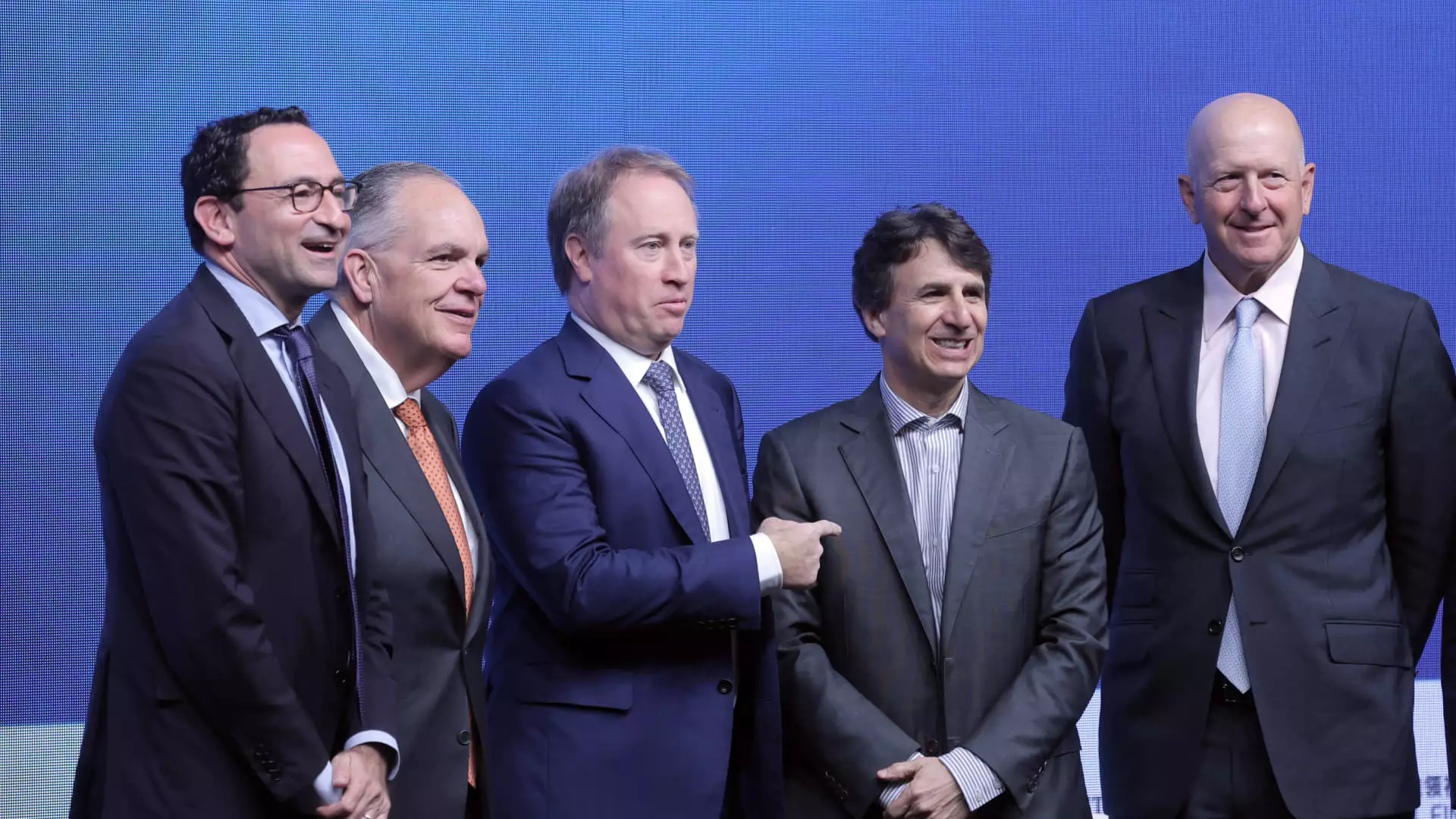In recent discussions surrounding the state of the U.S. economy, one voice has emerged with distinct clarity: Marc Rowan, the CEO of Apollo Global Management. Speaking at the Global Financial Leaders’ Investment Summit in Hong Kong, Rowan highlighted a burgeoning “industrial renaissance” that is reigniting demand for capital across various sectors. This burgeoning need is not just another financial trend; it signifies a major transformation influenced by government policies, foreign investment, and pivotal sectors like technology and energy.
Rowan emphasized the extraordinary demand for capital, which he attributes to expansive government spending initiatives. Notably, this includes investments in infrastructure and cutting-edge industries such as semiconductors, as well as initiatives under the Inflation Reduction Act. His insights underline capitalism’s adaptability in responding to governmental fiscal measures aimed at revitalizing the economy.
The Intersection of Government Spending and Capital Demand
The current economic landscape presents a paradox. While the U.S. government grapples with substantial deficits, it simultaneously fuels an environment ripe for capital investment. Rowan pointed out that this dynamic creates a favorable climate for capital raising activities. The investment community is poised to capitalize on this environment, marked by funding needs spurred by new industrial policies like the CHIPS and Science Act.
The interdependence between government spending and capital demand is crucial to understanding the current financial ecosystem. The infrastructure legislation from 2021 and other measures signify a governmental push towards enhancing the country’s industrial capabilities, which in turn will necessitate significant investments. As this spending plays out, one must recognize its role in shaping market expectations, especially regarding foreign investment.
Trends in Foreign Direct Investment
Interestingly, over the past three years, the U.S. has emerged as the leading recipient of foreign direct investment (FDI). Rowan forecasts that this trend will persist as the U.S. maintains its status as a prime destination for overseas capital. This influx of investment not only strengthens the economic foundation but also introduces an array of opportunities for growth across sectors. Foreign investors often seek stable environments, and the U.S. remains attractive due to its market size, innovation capabilities, and favorable regulatory climate.
Additionally, other industry leaders at the summit reaffirmed that sectors such as energy and data centers—integral to the functionalities of artificial intelligence and digitization—are set for substantial growth. This reflects a significant trend where industries essential for digital infrastructure are becoming focal points for investment, ensuring the U.S. stays competitive on a global scale.
From the perspectives shared at the summit, there is an optimistic signal regarding the revival of capital-raising activities that had previously experienced a decline. Goldman Sachs Chairman David Solomon noted the peak levels of capital-raising activity witnessed during the height of the COVID-19 pandemic. However, various geopolitical events and regulatory measures stifled this momentum.
As conditions begin to normalize, particularly with the anticipated regulatory changes under the prospective Trump administration, expectations are shifting once again. Companies are re-evaluating their capital strategies, embracing the potential for newfound growth within a recovering landscape. Morgan Stanley CEO Ted Pick’s reflections further bolstered this sentiment, indicating that the corporate sector maintains a relatively healthy position, conducive to increased investments.
As we look to the future, it becomes imperative to consider how these trends will shape capital markets. Solomon’s prediction of a significant upswing in capital-raising and mergers and acquisitions by 2025 underscores the optimism resonating within financial circles. This anticipated activity could mark a return to robust deal-making opportunities that drive economic growth and expansion.
Moreover, the interplay between consumer confidence and corporate performance will ultimately dictate the sustainability of this capital resurgence. Investors are keenly observing shifts in the economic landscape, where inflationary concerns coexist with growth opportunities.
The potential for an industrial renaissance in the U.S. is not merely a concept; it stands as a call to action for capital allocation. Driven by governmental initiatives, foreign investment dynamics, and evolving market needs, the coming years promise a revitalization of the capital markets propelled by strategic investment in vital sectors. As stakeholders, understanding these trends will be essential for navigating the invigorated landscape, making informed decisions to foster long-term economic prosperity.

